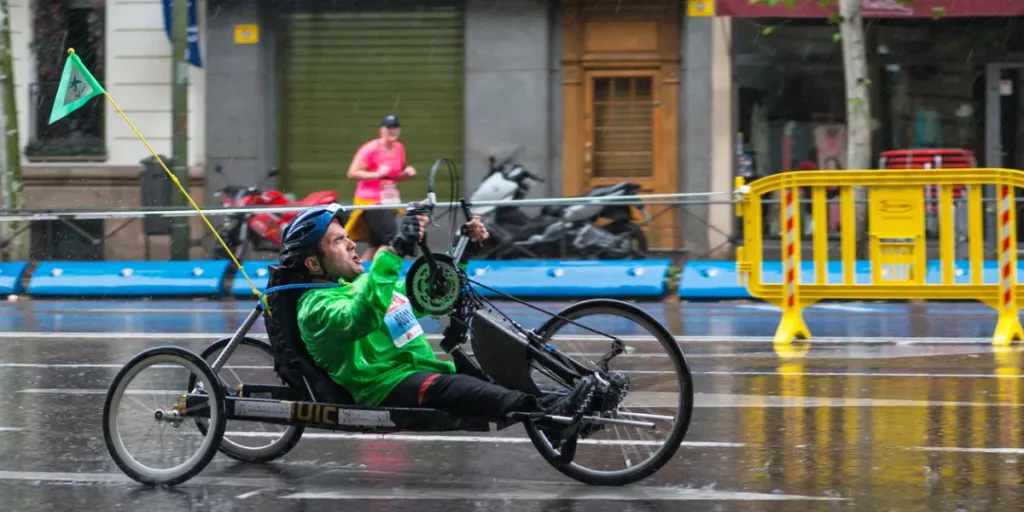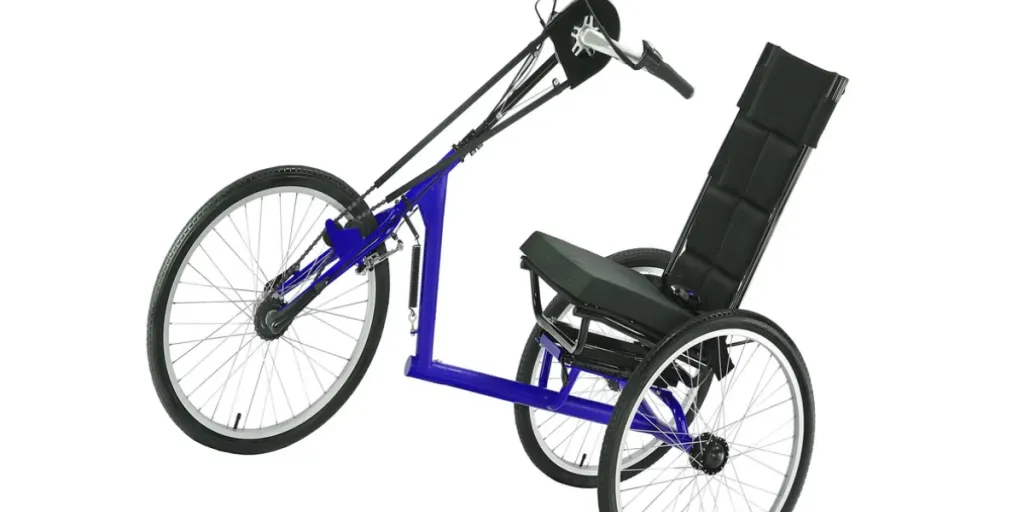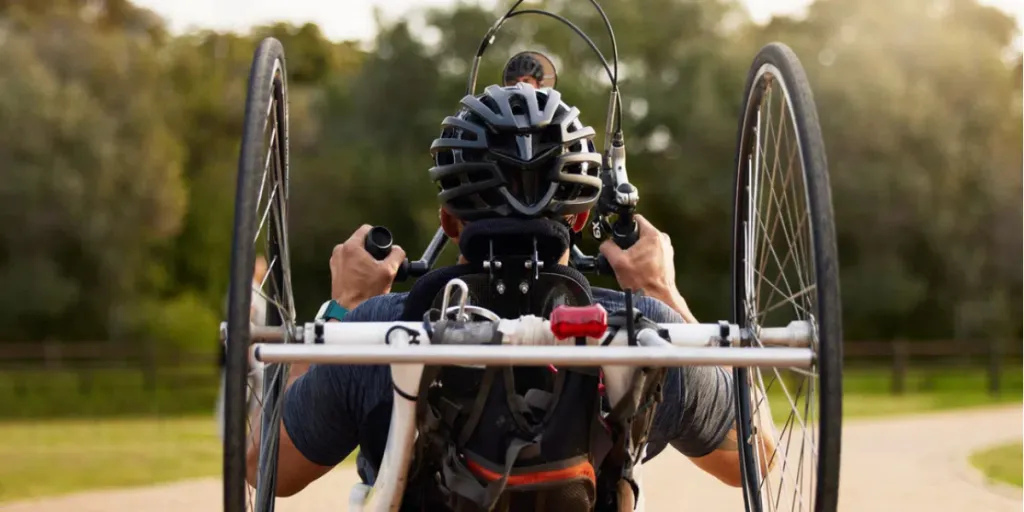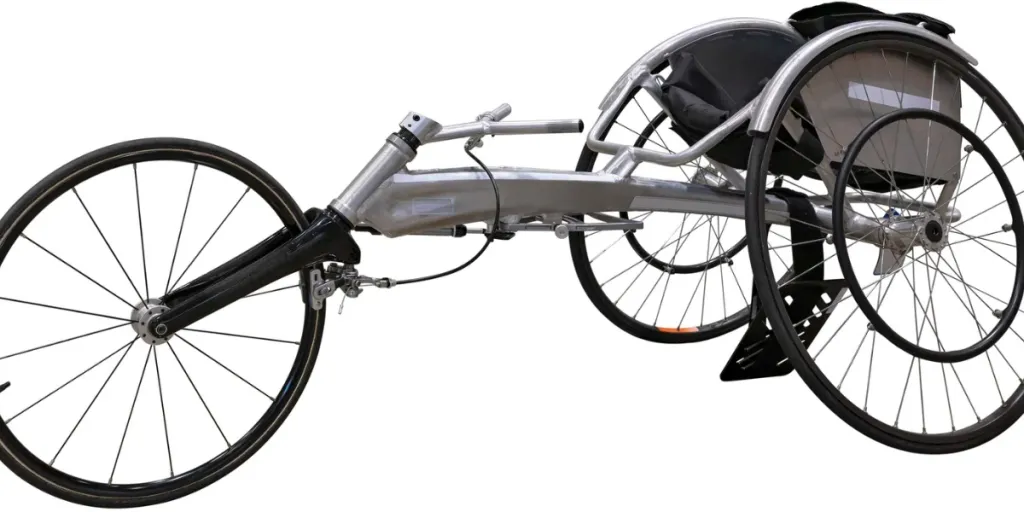Para cycling, a sport designed for athletes with physical disabilities, has seen a significant rise in popularity over recent years. This inclusive sport not only promotes physical fitness but also fosters a sense of community and competition among participants. As the market for para cycling continues to expand, it is essential to understand the factors driving its growth, the key players involved, and the global trends shaping its future.
Table of Contents:
– Market Overview
– Cutting-Edge Materials and Design
– Technological Advancements in Para Cycling
– Comfort and Functionality
Market Overview

Growing Popularity of Para Cycling
The popularity of para cycling has been on a steady rise, driven by increased awareness and support for athletes with disabilities. According to a report by Research and Markets, the global cycling wear market, which includes para cycling apparel, grew from USD 4.36 billion in 2023 to USD 4.60 billion in 2024, with a projected CAGR of 5.95%, reaching USD 6.54 billion by 2030. This growth is attributed to the increasing health awareness among individuals and the promotion of outdoor sports activities by various governments.
Para cycling events, such as the Paralympic Games, have played a crucial role in boosting the sport’s visibility and popularity. These events not only provide a platform for athletes to showcase their talents but also inspire others to take up the sport. The growing number of para cycling clubs and organizations worldwide further supports the sport’s development and accessibility.
Key Market Players and Innovations
Several key players in the cycling industry have recognized the potential of the para cycling market and are investing in innovative products and technologies to cater to this segment. Companies like PEARL iZUMi, Shimano Inc., and Specialized Bicycle Components, Inc. are leading the way with their advanced cycling gear and adaptive equipment designed specifically for para cyclists.
PEARL iZUMi, for instance, has been at the forefront of developing high-performance cycling apparel that meets the unique needs of para cyclists. Their products incorporate advanced materials and ergonomic designs to enhance comfort and performance. Similarly, Shimano Inc. has introduced adaptive cycling components, such as handcycles and recumbent bikes, that provide greater accessibility and ease of use for athletes with disabilities.
Innovations in smart technology are also making a significant impact on the para cycling market. Companies are integrating electronic sensors and performance tracking systems into their products, allowing athletes to monitor their vital signs and optimize their training routines. These advancements not only improve the overall cycling experience but also contribute to the safety and well-being of para cyclists.
Global Market Trends and Projections
The global market for para cycling is expected to continue its upward trajectory, driven by several key trends and projections. According to a report by Research and Markets, the cycling wear market is forecasted to grow by USD 1.81 billion during 2023-2028, accelerating at a CAGR of 8.02%. This growth is fueled by the increasing adoption of cycling as a fitness activity, the rising participation of women in cycling, and the influence of celebrity endorsements on purchase decisions.
Regional insights reveal that the Americas and Europe are leading the way in terms of market growth, thanks to strong government initiatives and investments in cycling infrastructure. In the Americas, the U.S. and Canada have implemented various programs to promote sports and outdoor activities, boosting the demand for cycling wear and equipment. In Europe, countries like Denmark, Germany, and the Netherlands have a rich tradition of cycling, further driving the market’s expansion.
The Asia-Pacific region is also emerging as a significant market for para cycling, with countries like China, Japan, and Australia witnessing a surge in cycling activities. The rapid expansion of eCommerce platforms in this region provides a potential platform for the growth of the cycling wear market, making it easier for consumers to access a wide range of products.
Cutting-Edge Materials and Design

Lightweight and Durable Frame Materials
In the realm of para cycling, the choice of materials for the frame is paramount. The industry has seen a significant shift towards using advanced materials that offer both lightweight and durability. Titanium and carbon fiber are at the forefront of this evolution. Titanium, known for its strength and resistance to corrosion, provides a robust yet lightweight option. Carbon fiber, on the other hand, is celebrated for its high strength-to-weight ratio, making it an ideal choice for competitive para cyclists who require both speed and stability. According to a professional report, the Baum Celaris bike, which won the Editors’ Choice for Best Bike at the 2024 MADE Show, exemplifies the innovative use of titanium. The bike features a unique internal routing system that enhances its sleek design and performance.
Ergonomic and Adaptive Design Features
Ergonomics play a crucial role in para cycling, where the design must cater to the specific needs of the rider. Adaptive design features such as adjustable seating, handlebar positions, and pedal configurations are essential. These features ensure that the bike can be tailored to the rider’s physical capabilities, providing maximum comfort and efficiency. The integration of ergonomic designs not only enhances performance but also reduces the risk of injury. For instance, the Cherubim Racer Ti Rim, known for its exquisite craftsmanship, incorporates ergonomic features that cater to the unique needs of para cyclists, ensuring a comfortable and efficient ride.
Customization for Individual Needs
Customization is a key aspect of para cycling, as each rider has unique requirements. Custom-built frames, adjustable components, and personalized fittings are becoming increasingly common. This level of customization ensures that the bike fits the rider perfectly, enhancing both comfort and performance. Schön Studio, which won the People’s Choice Award at the 2024 MADE Show, is renowned for its custom frames that are tailored to the individual needs of each rider. This bespoke approach allows para cyclists to achieve their best performance by riding a bike that is specifically designed for them.
Technological Advancements in Para Cycling

Integration of Smart Technology
The integration of smart technology in para cycling has revolutionized the sport. Advanced sensors and data analytics tools are now embedded in bikes to monitor performance metrics such as speed, cadence, and power output. These technologies provide real-time feedback, allowing riders to adjust their performance and training regimes accordingly. The use of smart technology not only enhances performance but also aids in injury prevention by monitoring the rider’s physical condition. The Peloton indoor training platform, for example, offers a comprehensive suite of smart technologies that provide detailed performance analytics, helping para cyclists optimize their training.
Enhanced Safety Features
Safety is a paramount concern in para cycling, and technological advancements have significantly improved safety features. Modern bikes are equipped with advanced braking systems, enhanced visibility features, and robust frame designs to ensure rider safety. The use of smart helmets with integrated communication systems and crash detection sensors further enhances safety. According to a professional report, the Shimano IC501 shoes, designed for indoor cycling, feature advanced safety mechanisms that ensure a secure fit and reduce the risk of injury during intense training sessions.
Performance-Boosting Innovations
Innovations aimed at boosting performance are continually being developed in the para cycling industry. Aerodynamic designs, lightweight materials, and advanced gearing systems are just a few examples. These innovations are designed to reduce drag, increase speed, and improve overall efficiency. The No.22 Drifter bike, showcased at the 2024 MADE Show, features a radical Reactor Aero design made from titanium, which significantly enhances its aerodynamic performance. Such innovations are crucial for para cyclists who compete at the highest levels and require every possible advantage to succeed.
Comfort and Functionality

Adaptive Seating and Support Systems
Comfort is a critical factor in para cycling, especially for long-distance rides. Adaptive seating and support systems are designed to provide maximum comfort and reduce fatigue. These systems include adjustable seats, ergonomic cushions, and support structures that cater to the rider’s specific needs. The use of padded cycling shorts, as reported by a professional guide, is essential for minimizing chafing and improving breathability, ensuring that riders remain comfortable during extended training sessions.
User-Friendly Controls and Adjustments
User-friendly controls and adjustments are vital for para cyclists, allowing them to make quick and easy modifications to their bike settings. This includes adjustable handlebars, easy-to-reach gear shifters, and customizable pedal configurations. These features ensure that the bike can be adapted to the rider’s preferences and physical capabilities, enhancing both comfort and performance. The Adidas indoor cycling shoes, for instance, are designed with mounting points for three-bolt cleats, making them compatible with various pedal types and ensuring a secure and comfortable fit.
Enhancing Rider Comfort for Long Distances
Long-distance rides require a high level of comfort to prevent fatigue and ensure optimal performance. Features such as breathable fabrics, ergonomic designs, and advanced support systems are essential. Indoor cycling clothing, as highlighted in a professional guide, emphasizes breathability and quick-drying fabrics to keep riders cool and comfortable. The use of reusable gel ice packs, as recommended by Nopinz, helps manage temperature and prevent overheating during intense training sessions. These innovations are crucial for enhancing rider comfort and ensuring that para cyclists can perform at their best over long distances.
Conclusion
The para cycling industry continues to evolve with cutting-edge materials, advanced technologies, and innovative designs that cater to the unique needs of para cyclists. As the sport progresses, the focus on customization, safety, and comfort will drive further advancements, enabling para cyclists to achieve new heights in performance. The future of para cycling looks promising, with ongoing innovations set to enhance the experience for riders and push the boundaries of what is possible in the sport.




